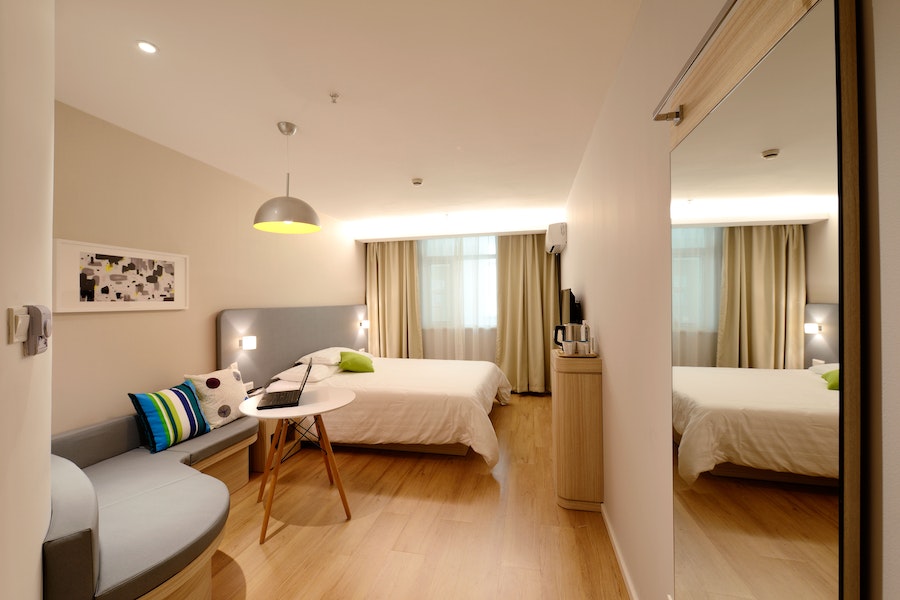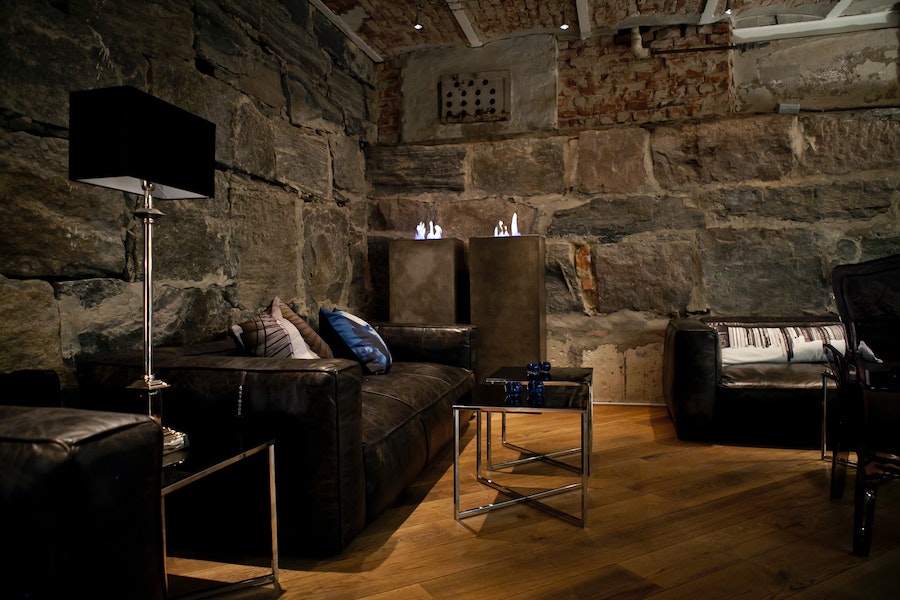Throughout the year, your house temperature will always change, but it is important to monitor how warm each room is to cater for all members of your household.
In this article, we will give you essential information on what temperature should your home be, and offer ways in which you can improve your heating at a reasonable price.
We will explore the following:
Contents
The Ideal Temperature for Each Room in your Home
So, what is the ideal temperature of the average UK, and what temperature should your home be? The average British home should have an allocated room temperature of 20°C / 68 degrees Fahrenheit. For example, bathroom temperatures should range between 22-24°C as they will naturally be cooler than other rooms, whereas bedrooms should be better 16 and 19°C. Therefore, in your home, each room should be between 15°C and 24°C maximum.
Below, you will find a table that registers the appropriate temperatures for each room in your home, and therefore give you more of an idea of what temperature should your home be.
| Room | Suggested temperature |
| Living room | 20-22°C |
| Corridor | 15-18°C |
| Kitchen | 18-20°C |
| Bedroom | 16-19°C |
| Bathroom | 22-24°C |
| Children’s bedroom | 16-20°C |
| Entryway | 15-18°C |

Why is Heating your Home Important?
As Britain is generally a cold country, heating your home is a priority to help prevent diseases if below a specific temperature. At the same time, you should only rely a little on heating because this can also affect your body temperature and can be unhealthy, both for your budget and your health. Furthermore, certain people will be more vulnerable to temperature changes than others. Here is a list of categories these could fit under and what temperature should your home be for them.
- Pregnancy: women will usually experience hot flushes during pregnancy as their bodies will be working to provide more heat to keep the baby warm. You should ensure to stay cool and hydrated for both the mother and baby’s health, and therefore maintain a comfortable temperature in your home. The recommended room temperature is 20-22°C for pregnant women, but for more information, speak to a medical professional.
- Babies/children: because young children cannot regulate their body temperature as much as adults, using your home’s central heating and other types of temperature regulation will help them to maintain their health and comfort.
- Toddlers: they will need to sleep in an ideal temperature between 18.3 – 21.1°C and sit in a room between 16-20°C. However, if they struggle to cope with these temperatures, then consult a medical professional.
Check out the government guidelines for heating your home.
Temperature Differences between Winter and Summer
The best way to monitor temperature fluctuations between winter and summer would be to invest in a thermostat. This will help to check the temperature outside, and therefore, you can calculate what temperature should your home be.
Aside from central heating, there are other options you can keep warm at a lower price:
- Winter: It is always nice to get home from the cold to an already warm house, but at the same time, it is better to get cuddled up under the covers and make more use of thermal comforts such as blankets, sleepwear and dressing gowns. These are a much cheaper option for you to keep warm in your home. This does not mean not turning on the heating at all, but keeping it at a lower temperature will help cut costs.
- Summer: During warm weather, it is likely you will not need to use the central heating much. At the same time, the rise in temperature outside can drastically affect the temperature in your home. It would help to keep windows open to lower the heat in your home and invest in thinner duvets. Overusing fans can be expensive to run for a long duration and can affect your budget.
- Boiler service: Another way to maintain a balance between heating being used between the seasons in your home is by having your boiler serviced. This will assist in maintaining the boiler’s performance and how much it will cost to rum, with how often it is used in the winter.
Alternatively, you can add insulation to your home, which will help reduce heat loss and cut carbon emissions. As most heating leaves through the floor, installing underfloor heating will help you make the most out of your heating, and therefore help you to figure out what temperature should your home be.
Learn how to reduce heat loss in your home today.
How to control your heating better
Your home will naturally have its heating system consisting of a boiler and radiators. Throughout the year, you can adjust the settings on these systems to better suit your needs and temperature requirements. Here are a few ways you can adapt them, which will assist you in saving money on your heating bill:
1. Using radiator valves
- Thermostatic Radiator Valves (TRVs) allow you to control the temperature of radiators around your home and can turn down the heating in any rooms that are not occupied.
- Radiator valves monitor the air temperature within the room they are in. The valve will close if the room is already warmer than its setting.
- You can find a scale between 0 – 6 on the valve, with zero meaning off and 6 being fully open. To ensure a comfortable temperature and monitor your heating bill, you should aim for the lowest setting on the valve to reduce how much hot water is used to conserve energy and money.
2. Smart heating
- With technology becoming ever more reliant, heating controls are available for your heating systems to be connected to the internet so that they can be adjusted remotely. These are known as smart meters.
- These systems can have a schedule that suits the house owner best and can adjust the times someone is in the house, minimising energy usage.

Heating your home your way!
So, by now you should have more of an idea of what temperature should your home be.
There are various ways you can change the temperature in your home, and it is a matter of finding what is best for you in terms of cost efficiency and accommodation.
Investing in underfloor heating is an excellent place to start if you want to make the most out of making your heating last longer. Furthermore, looking into smart meters will aid towards a better experience of saving your temperature in the house. As a whole, there are many ways to figure out what temperature should your home be, and therefore learn to save money using these methods accordingly.
FAQs
What temperature should my house be in the UK?
The Energy Saving Trust‘s advice is to heat a home between 18 – 21 degrees Celsius during the winter. In contrast, the World Health Organisation (WHO) recommends the ideal temperature for healthy people to be 18 degrees.
Is 17 degrees too cold for a house?
If your home is at least 14 – 15°C degrees, your body may lose control of its resistance to respiratory diseases. Therefore, 18°C is the recommended temperature during night-time, whilst 18-21°C is suitable for the daytime range.
What is an unhealthy room temperature?
20 – 23 is a suitable temperature for those over 65 years of age. Still, in your average home, your temperature should not be below 20 degrees, as this can increase the risk of respiratory disease or even hypothermia.
Is it better to turn down the heat at night?
To save prices on heating bills, you can set your temperature back to at least 8 degrees for 8 hours or more whilst you are sleeping. This will assist in saving 1% on your bill for every degree you lower on the thermostat.
Sources
- Gov.uk. (n.d.). Heat in Buildings. [Accessed 26/05/23] Retrieved from https://www.gov.uk/government/groups/heat-in-buildings
- Underfloor Heating Trade Supplies. (n.d.). Heating Controls. Retrieved from https://www.underfloorheatingtradesupplies.co.uk/water-underfloor-heating/heating-controls
- Energy Saving Trust. (n.d.). Take Control of Your Heating at Home. [Accessed 26/05/23] Retrieved from: https://energysavingtrust.org.uk/take-control-your-heating-home/
- World Health Organization. (2018). WHO Housing and Health Guidelines [Accessed 26/06/25] Retrieved from: https://iris.who.int/bitstream/handle/10665/275839/WHO-CED-PHE-18.03-eng.pdf
